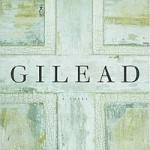For part three of the series on Science and Religion (Go here to review Part One and Part Two), we will explore reality in se and then take a look at various perspectives on reality, which include idealism, realism/critical realism. It’s helpful to recall that when talking about knowing reality, we are dancing on the floor of epistemology. Again, epistemology is the theory of knowledge or the philosophical line of questioning about knowledge and belief. Epistemology asks: How do we know what we know? What is justifiably required in order to say we have knowledge of a thing? Before we get started on reality in itself, take a gander at the Matrix clip below, which surfaces the epistemological rabbit hole we’ll explore.
Morpheus: The Matrix is everywhere. It is all around us…you can see it when you look out your window or when you turn on your television. You can feel it when you go to work, when you go to church, when you pay your taxes. It is the world that has been pulled over your eyes to blind you from the truth.
Neo: What truth?
Morpheus: That you are a slave, Neo. Like everyone else, you were born into bondage, born into a prison that you cannot smell or taste or touch. A prison for your mind. [1]
THE MATRIX & “IS THIS REAL LIFE?”
I recall seeing the Matrix in theaters when I was in 8th grade. Apart from being amazed at the revolutionary CG and action scenes, the film also caused a mini-existential crisis: How do I know that I exist? How do I know that what I experience as reality – what I see, hear, touch, taste and smell – are actually real? What if my mind really is imprisoned and machines are using me to generate energy? Why do I trust what I experience? And perhaps most troubling of all: do I really have to rely on Keanu Reeves to save me?
Then, I had my eureka moment. Over a bowl of Raisin Nut Bran, I smartened up and realized two things. First, no matter how hard I tried, I simply could not bend a spoon with my mind. And second, if humanity really was born into bondage by machines, we most certainly would not discover this via a movie, let alone a movie starring Keanu Reeves. More seriously, we would also not discover it at all unless the machines wanted us to, which they obviously wouldn’t given that they’re cruel slave masters. I am happy to say that since 1999, life has progressed swimmingly, free from fear of evil computer overlords (excepting the whole Y2K scare… don’t act like you weren’t slightly afraid of that). …That is, up until now.
This is because some highly intelligent people in the world make a very thoughtful case that we are, more likely than not, in a computer simulation. Nick Bostrom, Professor of Philosophy and Director of the Future of Humanity Institute at Oxford University is the primary proponent of such a view. Dr. Bostrom’s “Simulation Argument,” published in 2003, made big waves in the philosophical world (which is exactly why you’ve most likely never heard of it). To be fair, his line of reasoning is quite sophisticated; he’s not just parroting the Matrix. Unlike the Matrix, according to Dr. Bostrom’s view, we wouldn’t be bodies plugged to machines while our mind was “in” the Matrix. Rather Bostrom argues that we would be virtual minds in a virtual Matrix-ish world; the virtual progeny of supercomputers run by advanced humans. Our very minds would be simulations – nothing but a network of advanced computer circuits. That is, we wouldn’t really exist. There would be no real “I” to plug in.
IS HE CRAZY? NOPE, HE’S SWEDISH… BUT HE’S ALSO WICKED SMAHT
Though his argument is based on some high-level probability theory that’s above my head, here’s a quick run down of his “Simulation Argument.” According to Bostrom’s argument, one of the following three propositions must be true (but the argument doesn’t tell us which is true):
- The chances of any species at our current level of development not going extinct before reaching technological maturity (what he calls a “posthuman” stage) is extremely low. Species would go extinct before attaining the technological know-how to run Matrix-like simulations.
- The fraction of technologically mature civilizations that lose interest in creating ancestor simulations (computer simulations of virtual worlds with virtual people) is extremely high. Advanced humans wouldn’t be interested in creating ancestor simulations.
- You are most likely “living” in a computer simulation. Holy $#!&.
You can read his full paper here or some Simulation- Argument-for-Dummies explanations here: Bostrom dumbs it down and Bostrom on the Matrix and an article from the NYT Our Lives, Controlled From Some Guy’s Couch. Yeah. You can’t make this stuff up.
PERSPECTIVES ON REALITY: IDEALISM, REALISM AND CRITICAL REALISM
Nick Bostrom’s line of thought has some interesting connections to the science and religion conversation, especially in relation to perspectives on reality. His notion of simulated reality is actually very helpful for understanding the difference between idealism and realism because he’s assuming both in his argument (mind you: this is all granting that the third proposition is true and the first two are false).
First, he assumes realism. In asserting that posthumans, or advanced humans, would command an advanced technology that could run ancestor simulations, he’s demonstrating a commitment to an actual external world. Those beings actually exist in space and time and can manipulate real things in the real, external world.
He also assumes idealism. In asserting that the posthumans would and could create ancestor simulations (computer simulations of virtual people in a virtual world) such that the “people” in the simulations are nothing but virtual minds on some nanochip in a supercomputer, he’s demonstrating a commitment to a virtual world that is only experienced by a virtual mind. All that is in the simulation is only experienced in and by the mind. There is not external world; all experience of phenomena, is fundamentally mental and has no correspondence to a real, external world. This is an example of extreme idealism.
His argument includes real beings that manipulate real things in order to create virtual minds in a virtual world. Thus, he is assuming both realism and idealism in this argument.
IMMANUEL KANT AND IDEALISM
The most important version of idealism was elucidated by Immanuel Kant (1724-1804), probably the most important modern philosopher. His development of idealism is clearest (if anything by Kant can referred to as clear) in his Critique of Pure Reason. Kant argues that while things do exist in the external world, we simply cannot know them as they are in themselves. As we experience the world, we are dealing with but the representation or appearance of things (phenomena) and not the things in themselves (noumena). According to Kant, phenomena refer to our experience of things mediated through human sense impressions (intuition). Noumena, on the other hand, are the things themselves – which we simply don’t have access to because our experience of the world is always and inevitably mediated through intuition.
Here is a wee summary in his own words:
“…all our intuition is nothing but the representation of appearance; that the things which we intuit are not in themselves what we intuit them as being, nor are their relations so constituted in themselves as they appear to us, and that, if we remove our subject or even only the subjective constitution of the sense in general, then the entire constitution and all relations of objects in space and time, nay space and time themselves, would vanish. They cannot, as appearances, exist in themselves, but only in us. It remains completely unknown to us what objects may be in themselves and apart from all this receptivity of our sensibility. We know nothing but our manner of perceiving them…Even if we could impart the highest degree of distinctness to our intuition, we should not thereby come one step nearer to the constitution of objects in themselves. We should know, indeed know completely, our manner of intuition, i.e. our sensibility, but always under the conditions adhering to the subject originally, i.e., the conditions of space and time. What the objects may be in themselves would never become known to us even through the most enlightened knowledge of that which alone is given to us, namely, their appearance…This receptivity of our capacity of knowledge is called sensibility. Even if we could see through, and to the very bottom of, that appearance, this receptivity would remain for ever altogether different from the knowledge of the object in itself.” [2]
Now, it is important to note that Kant grants that things really do exist in the external world. He believes the falling tree makes a noise even if nobody is around to hear it. Still, it is interesting that he concedes the existence of things even though he claims the inability to know them apart from intuition. Surprisingly, he seems to see no conflict in claiming the inability to know things in themselves while simultaneously claiming knowledge that the things actually exist. How can he know? Well, he adds a necessary concession in Notes and Fragments. He writes: “The assertion that we can never be certain whether all of our putative outer experience is not mere imagining is idealism. It is thus not an assertion that they are, but rather only that we cannot produce a proof that they are not, consequently that the reality of an experience held to be outer can always be doubted.” [3] In other words, we can never really know for certain if our intuition is of an object in the world or a phantasm (the imagining of an object in the real world).
Though intuition can always be doubted, I think he generally assumes he’s not imagining the external object in sight. That is because he trusts his experience of the world (perhaps it is because he had no knowledge of supercomputers and the possibility of the Matrix?). In other words, Kant and most every honest and sane person (I’d even lump virtual people here) are functional critical realists even if they claim to believe otherwise.
REALISM & CRITICAL REALISM
The central claims of realism are: 1) things exist objectively and independent of our perception of, thoughts and assertions about them; 2) our perception, thoughts and assertions refer to these things that objectively exist; and 3) our perception, thoughts and assertions are objectively true or false insofar as they describe how the world actually is. What we’re talking about, in essence, is the correspondence theory of truth: a perception, though or assertion is true insofar as it corresponds to reality. Aristotle puts it well: “To say of what is that it is not, or of what is not that it is, is false, while to say of what is that it is, and of what is not that it is not, is true.” [4]
The perspective that is needed (and functionally assumed) in both science and religion is critical realism as opposed to extreme forms of realism and idealism. An unrestrained, extreme form of realism would assert that we have unmediated access to things in themselves and we can fully know Truth with a capital T. You know realism has run amuck when it is asserted “that reality impacts directly upon the human mind, without any reflection on the part of the human knower.” [5] An unrestrained, extreme form of idealism, on the other hand, would assert that everything we experience is mind; there is no external world. Critical realism tows the line between these two and offers the most satisfactory explanation for the success of both science and religion accurately (though incompletely) explaining reality (albeit different dimensions of reality).
According to Alister McGrath, critical realism “recognizes that the human mind attempts to express and accommodate that reality as best it can with the tools at its disposal” and “the key feature of critical realism is its recognition that the human mind is active in the process of perception.” [6] Critical realism freely concedes that the perceiver is not some passive receiver of knowledge of the external world but is an active participant in constructing reality from her perception. This is not at all to say that all knowledge is purely subjective (extreme idealism). It is to say that no knowledge is purely objective (extreme realism). In his discussion of critical realism,
McGrath cites a very helpful section of N.T. Wright’s The New Testament and the People of God. According to Wright, critical realism “is a way of describing the process of ‘knowing’ that acknowledges the reality of the thing known, as something other than the knower (hence ‘realism’), while also fully acknowledging that the only access we have to this reality lies along the spiraling path of appropriate dialogue or conversation between the knower and the thing known (hence ‘critical’)…Knowledge in other words, although in principle concerning realities independent of the knower, is never itself independent of the knower.” [7] Thus, while one cannot deny a certain sense of subjectivity, it is important to note we still have access (not unmediated access) to objective truth. It seems the main difference between critical realism is the confidence that the knower actually knows a thing (that it really exists, that what it perceives, thinks and asserts about it corresponds to the thing truly, even if incompletely).
THE NECESSITY OF CRITICAL REALISM FOR SCIENCE AND RELIGION
Again, though Kant articulated the view that we only have access to phenomena and not to noumena, he was still a functional critical realist. Kevin VanHoozer makes the point quite nicely. He writes:
Though he “…did not think we could know the world as it is in itself, he postulated the idea of the world as it is in itself (viz., truth) as the transcendental condition of scientific thinking. A ‘regulative’ idea accounts for the coherence of a practice. Truth, for Kant, is a ‘regulative’ idea that accounts for the coherence of scientific practice. Scientific research would be nonsense unless some such ideal as ‘the way the world is’ were presupposed.” [8]
This is because without adopting critical realism as one’s perspective on reality, there’s no coherent way of accounting for the success of scientific theories accurately describing the world. Again, McGrath is a helpful here in pointing to philosopher Hilary Putnam’s fascinating observation that “realism is the only philosophy that doesn’t make the success of science a miracle.” [9]
The reality is (pun intended) that we have no way of verifying whether we are in a matrix-like ancestor simulation or not. I think there are a variety of good reasons why this is highly unlikely. Regardless, the fact of the matter is that critical realism is still the only perspective of reality as we experience it because it enables science and validates religion – either in the virtual or the real world. Even if we were to be living in a simulation, the virtual world would still be governed by certain discoverable laws as encoded by the future-superhumans in their supercomputers. So, rather than discovering the Laws of Nature which were “written” by the Creator of the universe, one would discover the laws of virtual nature “written” by the creator of the virtual world. Either way, the success of science is both best enabled by and best accounted for by the perspective on reality espoused by critical realism.
[1] The Matrix, directed by Andy and Larry Wachowski, Warner Bros., 1999.
[2] Immanuel Kant, Critique of Pure Reason (Penguin, 2007), 75-76.
[3] Kant, Notes and Fragments (Cambridge Univ Press, 2007), 361.
[4] Aristotle, Metaphysics 1011b25
[5] Alister E. McGrath, Science and Religion: A New Introduction, 2nd ed (Wiley-Blackwell, 2010), 78.
[6] ibid, 79.
[7] N.T. Wright, New Testament and the People of God (Fortress, 1992), 35. His discussion on critical realism on pgs. 32-37 is worth reading.
[8] Kevin VanHoozer, Is There Meaning In This Text? (Zondervan, 2009), 302.
[9] Hilary Putnam, Mathematics, Matter and Method (Cambridge Univ Press, 1975), 73. Mentioned in McGrath, 78.












